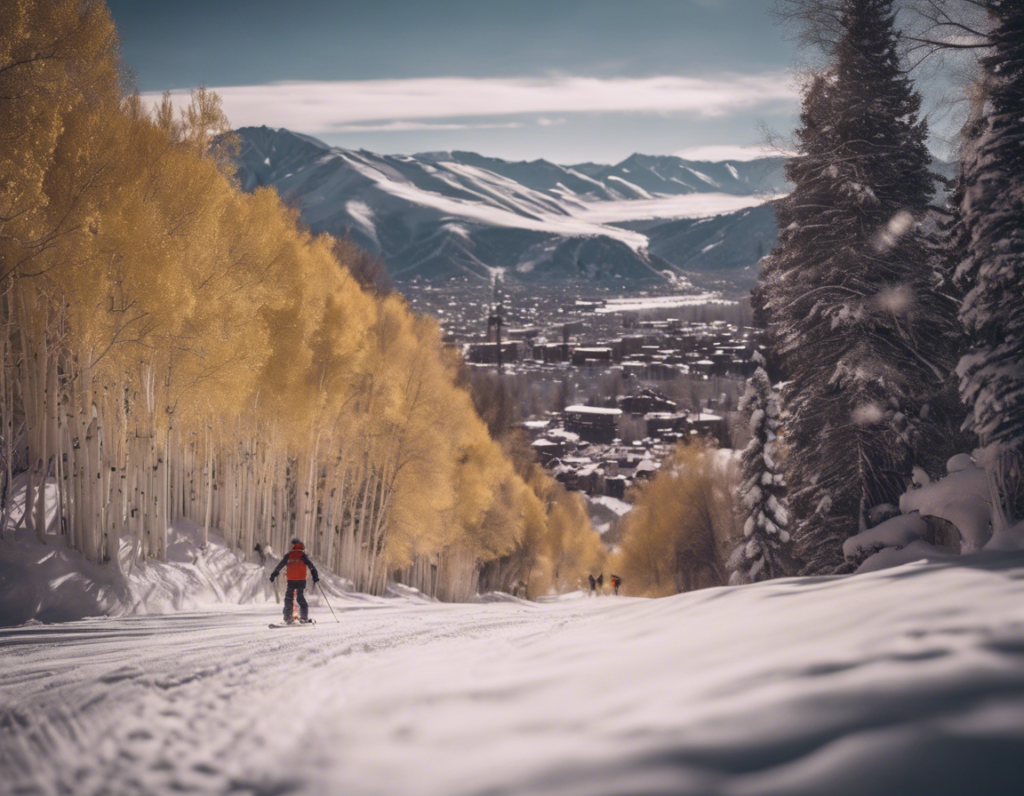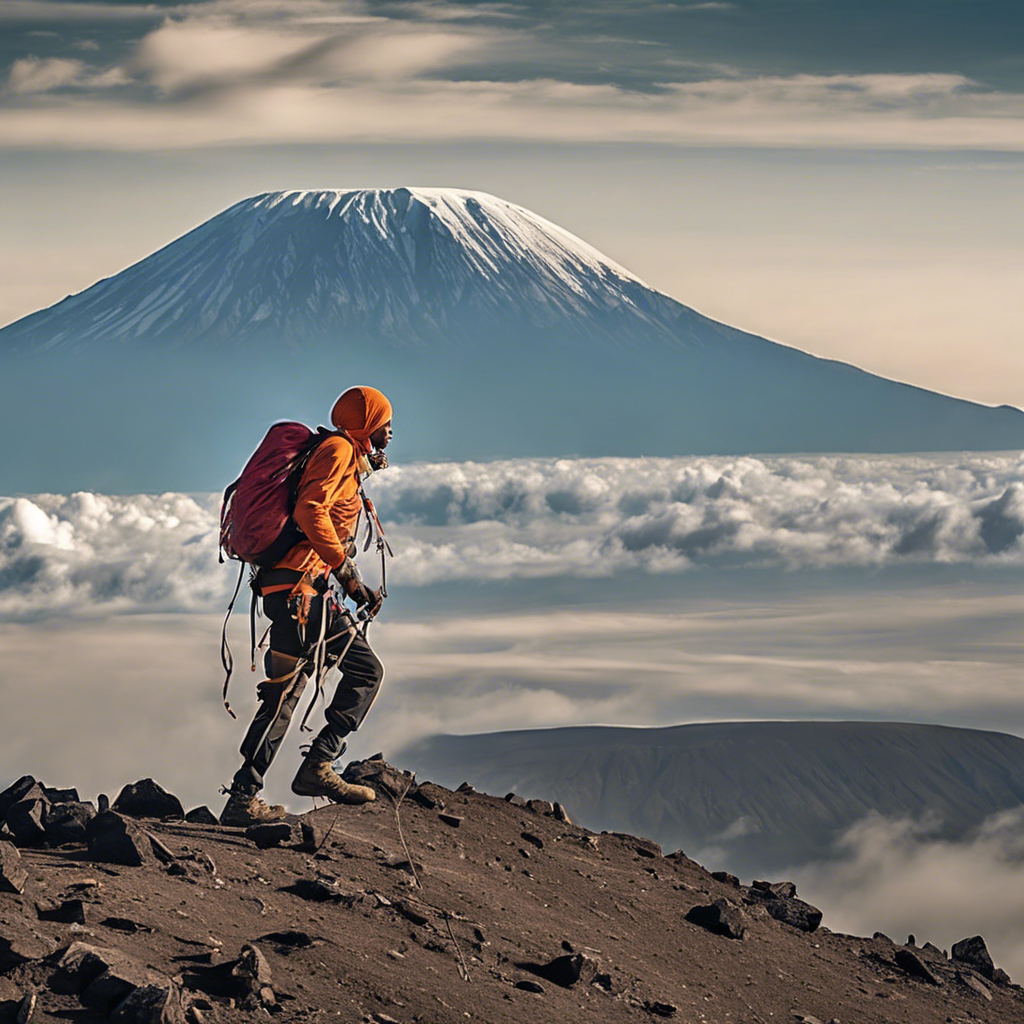
Climbing Mount Kilimanjaro:
Climbing Mount Kilimanjaro is not just a trek; it’s an adventure that offers breathtaking views, a taste of Tanzanian culture, and a chance to bond with loved ones. Whether you’re planning a romantic getaway or a family adventure, this guide will cover everything you need to know about climbing Africa’s highest peak, including the best activities, dining options, and travel tips.
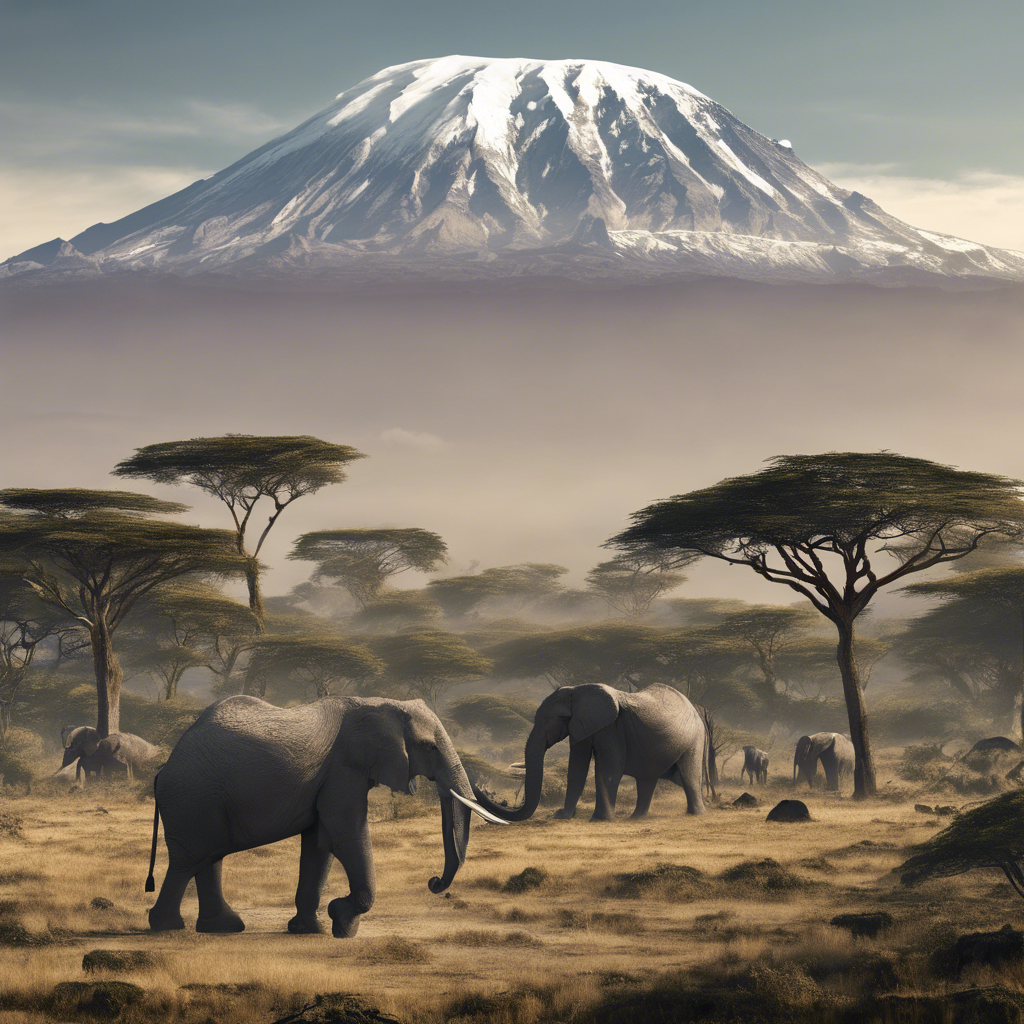
A Brief History of Mount Kilimanjaro:
Mount Kilimanjaro, Africa’s highest peak, boasts a rich and complex history that spans thousands of years. From its geological formation to its significance in exploration and culture, the mountain has played a pivotal role in the lives of many. Here’s an exploration of the history of Mount Kilimanjaro, detailing its early inhabitants, European exploration, and its contemporary status as a renowned climbing destination.
Geological Formation
Mount Kilimanjaro is a dormant volcano formed from volcanic activity over two million years ago. It consists of three volcanic cones: Kibo, Mawenzi, and Shira. The Shira cone is now extinct and eroded, while Mawenzi and Kibo have undergone significant geological changes due to subsequent eruptions. Kibo, the highest of the three, reaches an elevation of 5,895 meters (19,341 feet) at its summit, Uhuru Peak.
Early History and Inhabitants
Evidence suggests that humans have inhabited the slopes of Kilimanjaro since at least 1000 BC. Archaeological finds, such as primitive stone bowls, indicate that early inhabitants utilized the mountain’s resources for daily living. The fertile slopes provided ample food sources and fresh water, making it an attractive location for early communities.
The local tribes, including the Chagga people, revered Kilimanjaro as a significant cultural landmark. They referred to it as “Mountain of Greatness” in Swahili or “That which defeats the caravan” in their own language. The Maasai called it “White Mountain,” highlighting its snow-capped peaks.
Historical References
Throughout history, Kilimanjaro has been mentioned by various explorers and scholars:
Ptolemy (2nd century AD) described a great snow mountain in his writings.
Arab historians in the 13th century noted a mountain that was “white in color,” indicating early awareness of Kilimanjaro’s snowy summit3.
In the 16th century, Portuguese explorers referred to it as “Ethiopian Mount Olympus,” linking it to legendary sources of water like the Nile.
European Exploration
The 19th century marked a significant period for Kilimanjaro as European explorers began to take an interest in the mountain:
Johannes Rebmann, a German missionary, was the first European to report seeing Kilimanjaro in 1848. His accounts sparked curiosity about the mountain among Westerners.
Following Rebmann’s discovery, several expeditions were launched to explore and climb the mountain. Notably, Hans Meyer and Ludwig Purtscheller made history in 1889 by becoming the first recorded individuals to reach Uhuru Peak after multiple attempts25.
Meyer faced challenges during his expeditions due to his strict leadership style and reliance on corporal punishment for his porters. Despite this, he successfully summited Kilimanjaro and contributed significantly to its exploration.
Cultural Significance
Kilimanjaro has served various roles throughout history:
It acted as a navigational aid for traders moving between the coast and the interior.
The mountain became a symbol of colonial power struggles as European nations vied for control over East Africa.
After Tanzania gained independence in 1963, Uhuru Peak was renamed Kaiser Wilhelm Peak to signify freedom (Uhuru means “freedom” in Swahili).
Modern Climbing Era
In recent decades, Kilimanjaro has transformed into one of the world’s premier trekking destinations. The number of climbers has surged from just a few hundred annually in the late 20th century to over 40,000 climbers per year today. The mountain offers various routes catering to different skill levels and experiences.
Notable achievements in modern climbing include:
In 2009, Gertrude Benham became the first woman to summit alone at just 22 years old.
Speed records have been set by climbers like Karl Egloff, who completed a round trip from base to summit in under seven hours3.
Conclusion
Mount Kilimanjaro’s history is a tapestry woven from geological formation, early human habitation, cultural reverence, and modern exploration. The mountain continues to captivate adventurers from around the globe while serving as a reminder of Africa’s rich heritage and natural beauty. As climbers embark on their journeys up this majestic peak, they not only challenge themselves physically but also connect with centuries of history that have shaped this iconic landmark.
Top 10 Things for Couples to Do While Climbing Mount Kilimanjaro:
Climbing Mount Kilimanjaro is not just about reaching the summit; it’s also about creating unforgettable memories with your partner. Here are the top ten romantic activities couples can enjoy while climbing this majestic mountain.
1. Stargazing Under the African Sky
After a long day of trekking, couples can unwind by stargazing. The clear skies of Kilimanjaro offer a spectacular view of the Milky Way, far removed from city lights. Snuggling under a blanket, sharing stories, and marveling at the constellations can create an intimate atmosphere that deepens your connection.
2. Sunrise at Uhuru Peak
Reaching Uhuru Peak at sunrise is one of the most magical experiences couples can share. The breathtaking views as the sun rises over the horizon are truly unforgettable. This moment not only symbolizes achievement but also provides a perfect backdrop for some stunning couple photos to capture the moment.
3. Romantic Campsite Dinners
Imagine enjoying a candlelit dinner under the stars after a day of hiking. Many trekking companies offer special meals for couples, complete with local delicacies and perhaps even a bottle of wine or champagne to celebrate your achievements together. Sharing a meal in such a unique setting fosters intimacy and romance.
4. Couple’s Challenges
Engaging in light-hearted competitions can add fun to your trek. Whether it’s who can take the best photo or spot wildlife first, these challenges can lighten the mood and create laughter, which is vital during strenuous climbs. Plus, they provide great opportunities for bonding.
5. Guided Nature Walks
Take time to explore the lower slopes of Kilimanjaro together with guided nature walks. These walks allow couples to learn about the unique flora and fauna of the region while enjoying each other’s company in a serene environment. It’s a great way to connect with nature and each other.
6. Nighttime Summits
Many climbers choose to summit Kilimanjaro at night to reach Uhuru Peak by dawn. While this is physically challenging, it’s also an exhilarating experience that couples can share. The thrill of climbing in the dark, followed by witnessing the sunrise at the peak, creates a shared adventure that strengthens your bond.
7. Relaxation Days
Consider scheduling rest days during your climb to relax and enjoy each other’s company without the pressure of hiking. Use this time to explore nearby attractions or simply enjoy quiet moments at base camps, allowing you to recharge for the next leg of your journey.
8. Cultural Experiences
Engaging with local cultures adds depth to your trip. Couples can participate in cultural exchanges with local communities or learn traditional dances together. These experiences not only enrich your understanding of Tanzanian culture but also create shared memories that you’ll cherish forever.
9. Wildlife Watching
Kilimanjaro is home to diverse wildlife, including monkeys, elephants, and various bird species. Taking time to spot wildlife together can be both exciting and romantic, as you share in the wonder of seeing animals in their natural habitat.
10. Capture Your Journey
Documenting your climb through photos or journaling can be a fun way for couples to reflect on their journey together. Consider hiring a professional photographer for a couple’s shoot against the stunning backdrop of Kilimanjaro or simply take candid shots throughout your trek to capture genuine moments of joy and connection.
Climbing Mount Kilimanjaro offers couples unique opportunities to bond through shared challenges and experiences amidst breathtaking scenery. From stargazing under African skies to celebrating at sunrise on Uhuru Peak, these activities not only enhance your adventure but also strengthen your relationship through unforgettable moments together. So pack your gear, bring your sense of adventure, and get ready for an incredible journey up Africa’s highest peak!
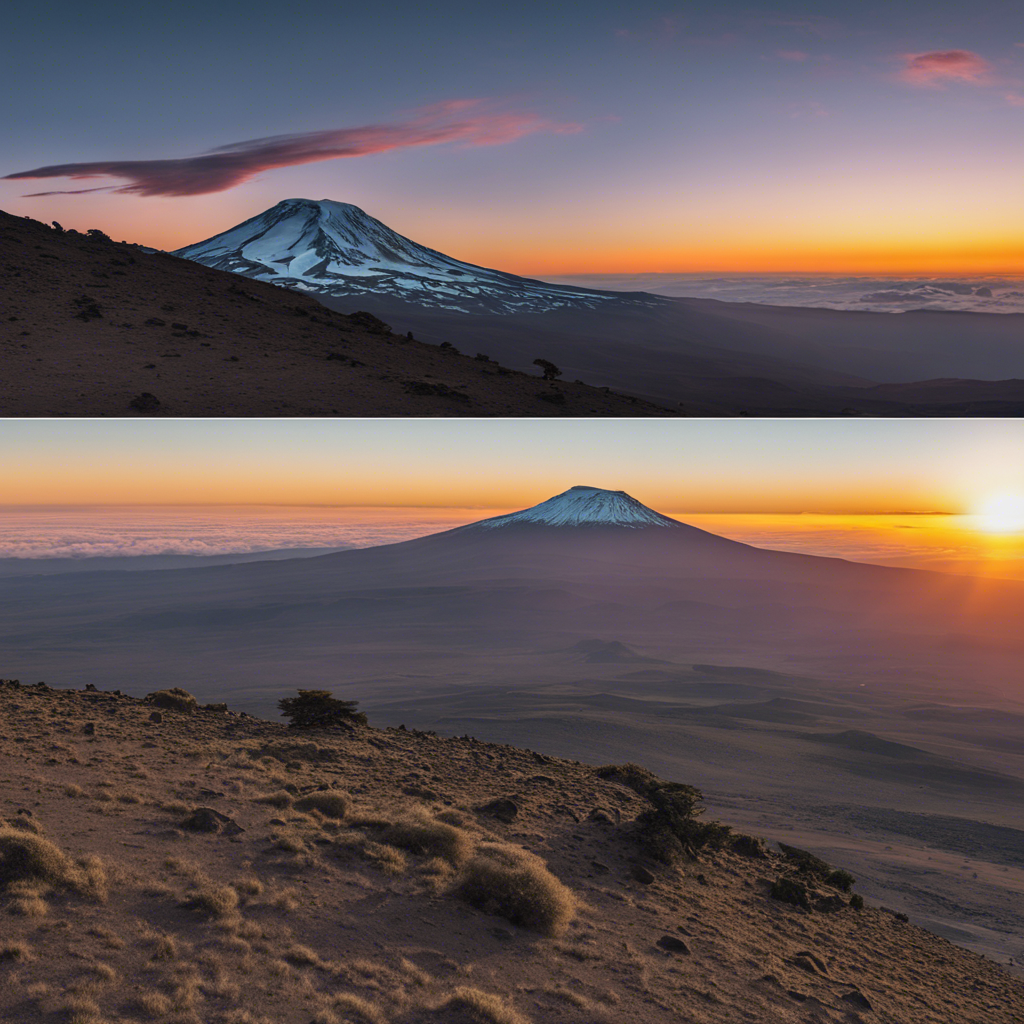
Nightlife in Kilimanjaro: Best Nightclubs:
The nightlife around Mount Kilimanjaro, especially in nearby towns like Moshi and Arusha, offers a vibrant mix of local culture, music, and entertainment. Here’s a detailed look at some of the best nightclubs and nightlife options for those looking to unwind after a day of trekking.
Top Nightclubs and Bars Near Kilimanjaro
Kilimanjaro Club
Location: Misugusugu Checkpoint, Kibaha, Tanzania
Rating: 4.5
Overview: This club is known for its lively atmosphere, featuring local DJs and live music. Open late into the night, it’s a great spot for dancing and socializing. The club often hosts themed nights and events that attract both locals and tourists alike.
The Club House Moshi
Location: Soweto, Moshi, Tanzania
Rating: 4.5
Overview: A popular hangout spot for climbers and locals, The Club House offers a relaxed vibe with good music and drinks. It’s perfect for couples looking to enjoy a casual night out with options for games and socializing.
Gamers Lounge
Location: Rau, Tanzania
Rating: 4.5
Overview: This lounge combines gaming with nightlife, offering video games alongside a bar atmosphere. It’s ideal for younger couples or those looking to engage in some friendly competition while enjoying drinks.
Stellah Pub
Location: Kilimanjaro Express Bus Stand, Arusha, Tanzania
Rating: 4.5
Overview: A cozy pub atmosphere that serves local brews and snacks. Stellah Pub is perfect for those looking to experience local Tanzanian culture while enjoying a laid-back evening with friends or loved ones.
Hours: Generally open until late.
Shia Bar Mamsera
Location: Marangu, Uuwo, Tanzania
Rating: 3.4
Overview: While not as upscale as other venues, Shia Bar offers an authentic local experience with affordable drinks and a friendly atmosphere. It’s a great place to mingle with locals after a long trek.
Hours: Open late into the night.
Sky Lounge Mashima Usseri
Location: Kahe, Ubetu, Tanzania
Rating: 3.3
Overview: This lounge offers stunning views of the surrounding landscape along with a relaxed atmosphere to enjoy cocktails or light bites. It’s ideal for couples looking for a romantic setting to unwind after climbing.
Hours: Generally open until late.
Other Nightlife Options
Live Music Venues: Many bars in Moshi feature live music nights showcasing local talent. These events can be an excellent way to immerse yourself in Tanzanian culture while enjoying great performances.
Cultural Events: Keep an eye out for local festivals or cultural events that may be happening during your visit. These often include traditional music and dance performances that provide insight into the region’s rich heritage.
Dining Experiences: Some restaurants offer evening entertainment alongside dining options. Places like Honey Badger Lodge serve delicious food and have outdoor seating that can be quite lively in the evenings.
Tips for Enjoying Nightlife in Kilimanjaro
Safety First: Always be aware of your surroundings and consider traveling in groups when exploring nightlife options.
Local Customs: Respect local customs and dress codes; while most places are casual, some clubs may have specific guidelines.
Transportation: Arrange transportation ahead of time if you plan to stay out late; taxis can be hard to find at night.
The nightlife around Mount Kilimanjaro provides an exciting contrast to the daytime adventures of climbing and exploring the mountain. With various clubs, bars, and local venues offering entertainment, couples can enjoy vibrant evenings filled with music, dancing, and cultural experiences that enhance their overall journey in this beautiful region of Tanzania. Whether you’re celebrating a successful summit or simply looking to relax after your adventures, Kilimanjaro’s nightlife has something for everyone!
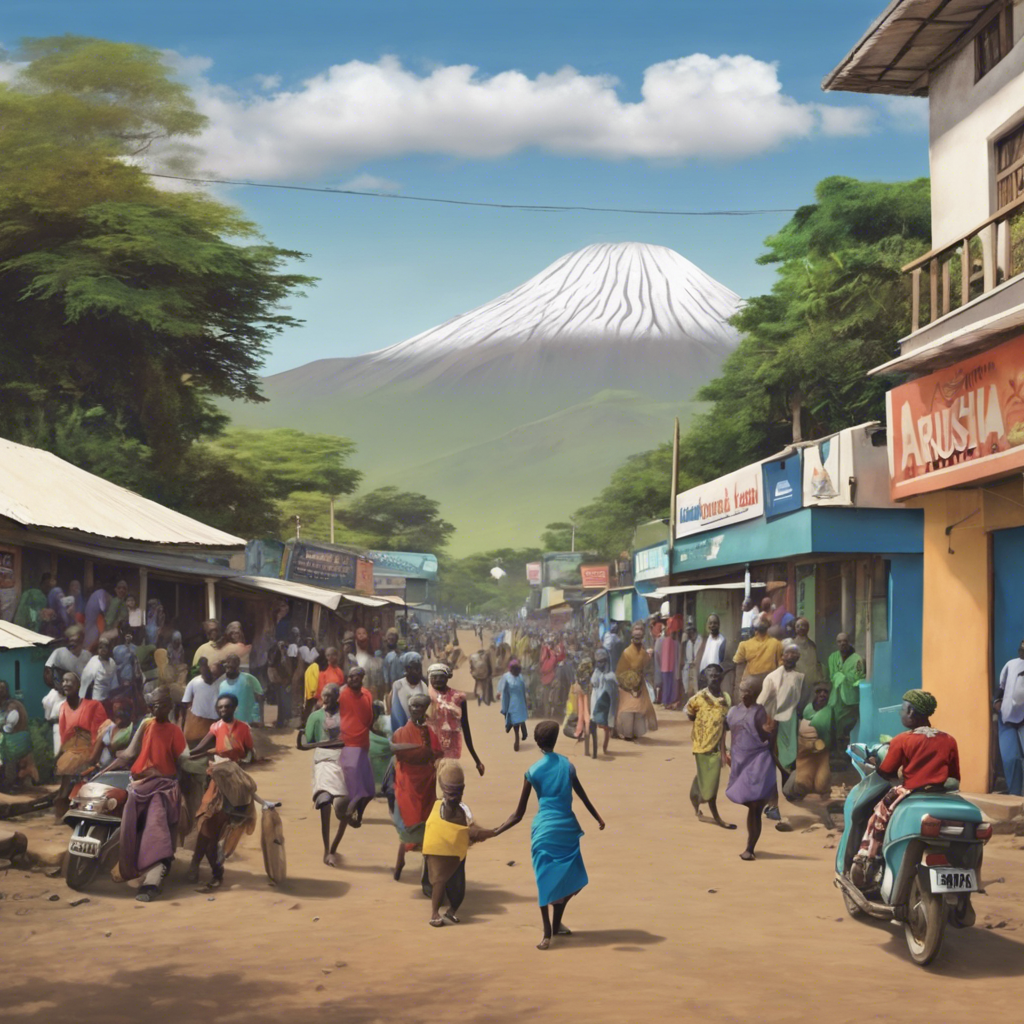
Trending Best Places to Visit Around Kilimanjaro:
When planning a visit to the Kilimanjaro region, there are numerous attractions and activities that cater to different interests, from breathtaking natural wonders to cultural experiences. Here’s a detailed exploration of the trending best places to visit around Kilimanjaro.
1. Mount Kilimanjaro
Overview: As the highest peak in Africa, Mount Kilimanjaro is a must-visit for adventure seekers. The mountain offers several trekking routes, each with unique landscapes and challenges.
Activities: Trekking to Uhuru Peak, the highest point, is the ultimate goal for many climbers. The experience of hiking through diverse ecosystems—from lush rainforests to alpine deserts—provides unforgettable views and encounters with wildlife.
2. Materuni Waterfalls
Location: Near Moshi, Tanzania
Overview: This stunning waterfall is located in the Materuni village and is accessible via a scenic hike through coffee plantations.
Activities: Visitors can swim in the natural pool at the base of the falls, enjoy a guided coffee tour, and learn about local culture. The area is also perfect for picnics amidst nature.
3. Lake Chala
Location: On the border of Tanzania and Kenya
Overview: A beautiful crater lake formed by volcanic activity, Lake Chala is known for its stunning turquoise waters.
Activities: Ideal for kayaking, swimming, and relaxing by the shore. The lake offers incredible views of Mount Kilimanjaro and is a great spot for photography.
4. Chemka Hot Springs (Kikuletwa Hot Springs)
Location: Near Moshi
Overview: These natural hot springs are a hidden gem surrounded by palm trees and lush vegetation. Activities: Visitors can soak in the warm waters, which are perfect for relaxation after a long trek. The springs also provide opportunities for picnicking and enjoying the serene environment.
5. Arusha National Park
Location: Approximately 30 kilometers from Kilimanjaro
Overview: This national park features diverse landscapes, including forests, lakes, and volcanic craters.
Activities: Game drives offer chances to see wildlife such as giraffes, zebras, and various bird species. The park is also popular for hiking and canoeing on Momella Lake.
6. Ndoro Waterfalls
Location: Near Moshi
Overview: A lesser-known but stunning waterfall that offers a peaceful escape into nature.
Activities: Hiking to Ndoro Waterfalls allows visitors to enjoy beautiful scenery and swim in natural pools. It’s an excellent spot for those looking to avoid crowds.
7. West Usambara Mountains
Location: About 90 kilometers from Kilimanjaro
Overview: Known for its lush landscapes and biodiversity, this mountain range offers spectacular views and rich flora.
Activities: Hiking trails vary in difficulty, providing options for both casual walkers and serious trekkers. Birdwatching is also popular here due to the variety of species found in the area.
8. Ngorongoro Conservation Area
Location: Approximately 140 kilometers from Kilimanjaro
Overview: A UNESCO World Heritage site famous for its stunning crater and rich wildlife.
Activities: Safaris in Ngorongoro allow visitors to see lions, elephants, rhinos, and more in their natural habitat. The unique geological features make it a photographer’s paradise.
9. Serval Wildlife Sanctuary
Location: Near Moshi
Overview: A sanctuary dedicated to the conservation of wildlife, particularly servals and other small cats.
Activities: Guided tours provide insights into conservation efforts while offering opportunities to see various animals up close.
10. Cultural Experiences in Local Villages
Overview: Engaging with local communities provides insight into Tanzanian culture and traditions.
Activities: Visitors can participate in village tours that include traditional dance performances, cooking classes featuring local cuisine, or visits to local markets where artisans sell handmade crafts.
The Kilimanjaro region is rich with attractions that cater to diverse interests—from adventurous hikes up Africa’s tallest mountain to relaxing days at hot springs and cultural immersions in local villages. Each location offers unique experiences that enhance your journey through this stunning part of Tanzania. Whether you’re an adventure seeker or someone looking to unwind amidst nature’s beauty, Kilimanjaro has something special waiting for you!
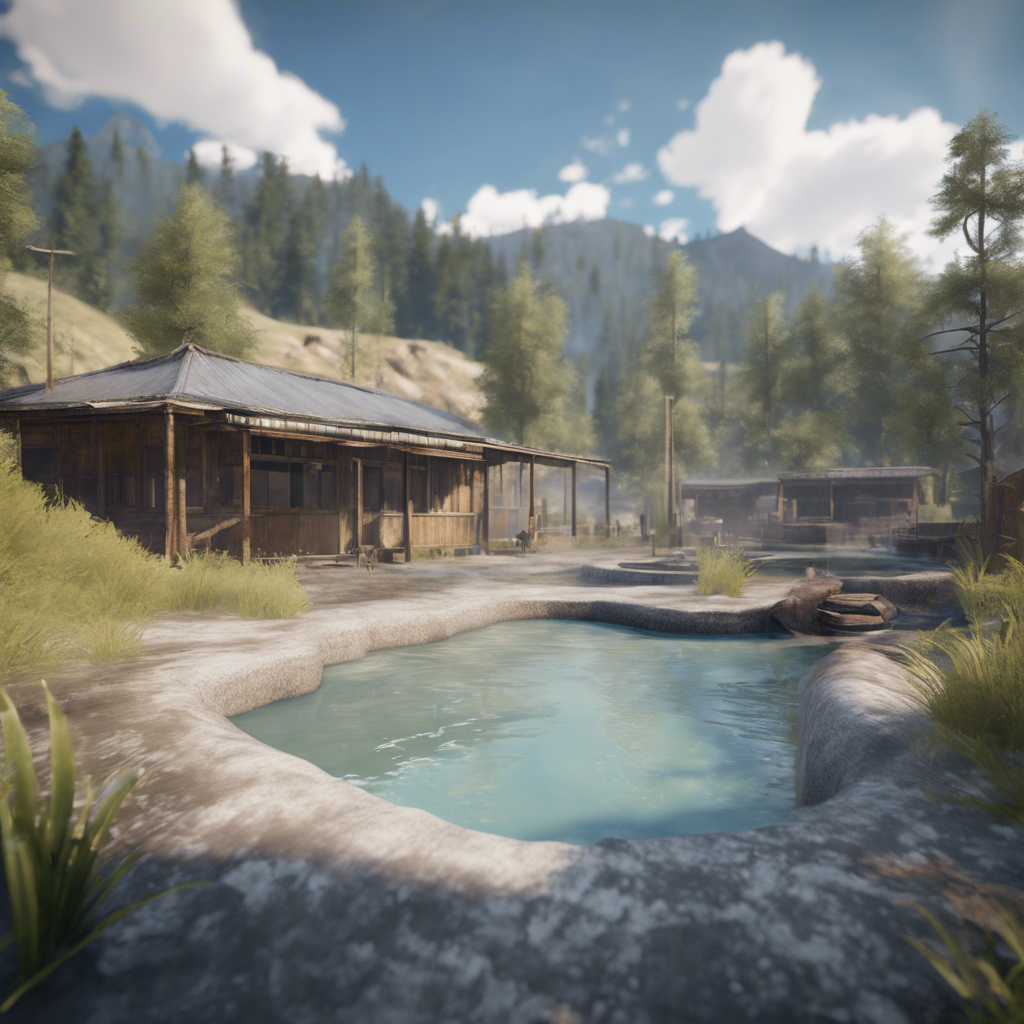
Top Restaurants and Cuisine in Moshi:
Moshi, a charming town nestled at the foot of Mount Kilimanjaro, is not only a gateway for climbers but also a culinary hotspot. The town offers a diverse array of restaurants that cater to various tastes and budgets. Here’s an exploration of the top restaurants and cuisines in Moshi, showcasing the best dining experiences you can enjoy during your stay.
Top Restaurants in Moshi
Peppers
Cuisine: International
Overview: Known for its vibrant atmosphere and diverse menu, Peppers offers a mix of local and international dishes, making it a favorite among tourists and locals alike.
Must-Try: Their grilled meats and fresh salads are particularly popular.
Jay’s Kitchen
Cuisine: Korean
Overview: Moshi’s first Korean restaurant, Jay’s Kitchen features an open show kitchen where diners can watch their meals being prepared.
Must-Try: The Korean Chilly Fried Chicken and Maki Sushi are standout dishes.
Indo-Italiano Restaurant
Cuisine: Indian and Italian
Overview: A beloved culinary institution in Moshi, this restaurant is known for its delicious pizzas and authentic Indian cuisine.
Must-Try: The butter chicken and garlic naan are crowd favorites.
El Rancho
Cuisine: Indian
Overview: El Rancho is famous for its extensive menu of Indian dishes, attracting both locals and visitors with its flavorful offerings.
Must-Try: Don’t miss the Reshmi Kebab and Tikka Masala.
Naseeb Restaurant
Cuisine: Local Tanzanian
Overview: A popular roadside eatery, Naseeb is known for its affordable prices and delicious local dishes.
Must-Try: The chicken tikka with chips and mishkaki (skewered meat) are highly recommended.
Mimosa
Cuisine: International
Overview: Located at the edge of Uhuru Park, Mimosa offers a relaxed setting with a diverse menu that includes salads, burgers, and steaks.
Must-Try: Their fresh juices are perfect for refreshing after a long day of trekking.
Kilimanjaro Coffee Lounge
Cuisine: Café
Overview: This café is perfect for coffee lovers looking to relax after climbing or exploring. It serves a variety of coffee drinks along with light meals.
Must-Try: Their coffee blends are made from locally sourced beans.
Mama Freddies
Cuisine: Swahili
Overview: A small eatery offering traditional Swahili cuisine, Mama Freddies is known for its homey atmosphere.
Must-Try: Sample the local fish dishes, which are prepared fresh daily.
Bikerz Bar
Cuisine: Bar & Grill
Overview: This lively bar offers great food alongside a vibrant atmosphere perfect for socializing after a day on the mountain.
Must-Try: Their BBQ options are popular among patrons looking for hearty meals.
Union Café
Cuisine: Café
Overview: Located in the heart of Moshi, Union Café is known for its homemade cheesecakes and excellent coffee.
Must-Try: Pair your coffee with one of their delicious cakes for the perfect afternoon treat.
Culinary Experiences
Local Markets: Explore local markets where you can sample street food like chips mayai (potato chip omelette) or samosas. These markets provide an authentic taste of Tanzanian cuisine.
Cooking Classes: Some restaurants offer cooking classes where you can learn to prepare traditional Tanzanian dishes, providing both a fun experience and a deeper understanding of the culture.
Moshi’s dining scene reflects the rich cultural tapestry of Tanzania, offering everything from local delicacies to international cuisine. Whether you’re fueling up before your Kilimanjaro climb or relaxing after an adventure-filled day, these restaurants provide delicious options that cater to every palate. Be sure to explore these culinary gems during your visit to Moshi!

Top 15 Things for Families to Do in Kilimanjaro:
Exploring the Kilimanjaro region offers families a wealth of activities that cater to all ages, making it an ideal destination for adventure and bonding. Here are the top 15 things for families to do in Kilimanjaro, ensuring a memorable experience for everyone.
1. Hike to Materuni Waterfalls
Overview: A family-friendly hike that takes about 1.5 hours each way, leading to stunning waterfalls.
Activities: Families can swim in the natural pool at the base of the falls and enjoy a packed lunch amidst beautiful scenery. The hike is moderate, making it suitable for older children and teens.
2. Visit Chemka Hot Springs
Overview: Located near Moshi, these natural hot springs are perfect for a relaxing day out.
Activities: Families can swim in the warm waters, picnic in the surrounding area, and enjoy the lush environment. The springs are particularly enjoyable after a day of hiking.
3. Go on a Coffee Plantation Tour
Overview: Experience the rich coffee culture of Tanzania by visiting local coffee farms.
Activities: Families can learn about coffee production, participate in coffee-making processes, and taste fresh coffee. This educational experience is both fun and interactive.
4. Explore Arusha National Park
Overview: Just a short drive from Kilimanjaro, this park offers diverse wildlife and beautiful landscapes.
Activities: Families can go on guided game drives to see animals like giraffes, zebras, and elephants. The park also features walking trails suitable for families.
5. Visit Olpopongi Maasai Cultural Village
Overview: A full-day cultural experience where families can learn about Maasai traditions.
Activities: Engage in traditional dances, enjoy local meals, and take guided tours of the village to learn about Maasai customs and lifestyles.
6. Canoe on Little Momela Lake
Overview: Located in Arusha National Park, this serene lake is perfect for canoeing.
Activities: Families can paddle around the lake while enjoying views of Mount Kilimanjaro and observing various bird species.
7. Mountain Biking or Hiking in Rau Forest Reserve
Overview: An adventure-filled day in a beautiful forest setting.
Activities: Families can choose between hiking or biking through scenic trails while spotting wildlife such as monkeys and various bird species. Local guides enhance the experience with insights into the ecosystem.
8. Walk the Rim of Ngurdoto Crater
Overview: This moderate hike offers stunning views of the crater and surrounding wildlife.
Activities: Families can enjoy a guided walk along the rim while learning about the unique flora and fauna found in this area.
9. Visit Ndoro Waterfalls
Overview: A lesser-known waterfall that provides a peaceful escape.
Activities: The hike to Ndoro Waterfalls is suitable for families looking for a quieter nature experience where they can swim and relax away from crowds.
10. Trekking on Mount Meru
Overview: For families looking for a more challenging adventure, Mount Meru offers trekking opportunities.
Activities: The trek provides stunning views and is less crowded than Kilimanjaro, making it ideal for those seeking a quieter experience.
11. Wildlife Safari at Mkomazi National Park
Overview: A bit further afield but worth it for wildlife enthusiasts.
Activities: Families can embark on a safari to see endangered species like African wild dogs and various antelope species in their natural habitat.
12. Explore Lake Chala
Overview: A crater lake located on the border between Tanzania and Kenya.
Activities: Families can enjoy swimming, kayaking, or simply relaxing by the shores of this beautiful lake with its stunning turquoise waters.
13. Participate in Local Craft Workshops
Overview: Engage with local artisans through craft workshops.
Activities: Families can learn traditional crafts such as beadwork or basket weaving, providing a hands-on cultural experience that kids will love.
14. Bird Watching
Overview: Kilimanjaro’s diverse ecosystems are home to over 750 bird species.
Activities: Families can enjoy birdwatching tours that cater to both novice birders and experienced enthusiasts, providing opportunities to spot unique species.
15. Relax at Local Markets
Overview: Experience local culture by visiting markets in Moshi or Arusha.
Activities: Families can shop for souvenirs, taste local foods, and interact with vendors, providing an authentic glimpse into Tanzanian life.
The Kilimanjaro region offers an abundance of family-friendly activities that blend adventure with education and cultural experiences. From hiking scenic trails to engaging with local communities, these activities ensure that families create lasting memories together while exploring one of Africa’s most iconic landscapes. Whether you’re scaling mountains or relaxing by hot springs, there’s something for every family member to enjoy!
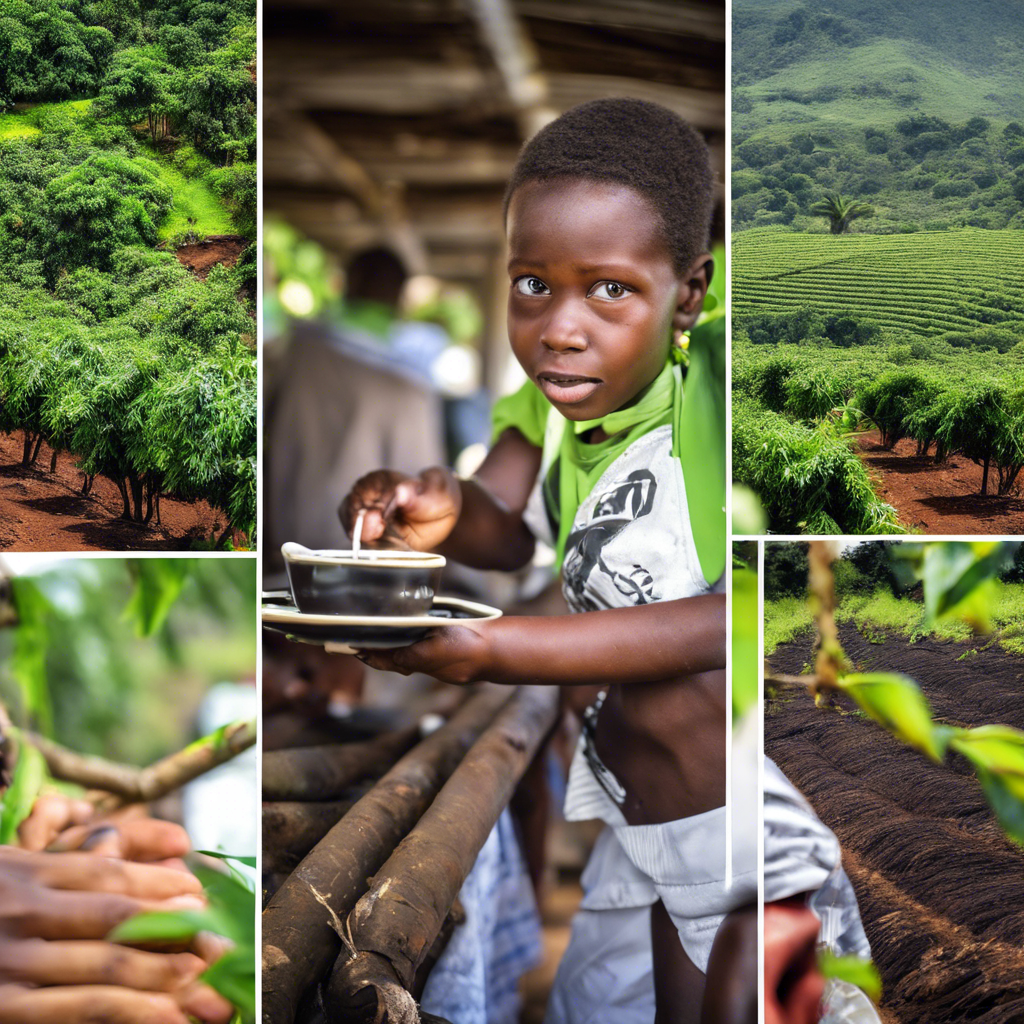
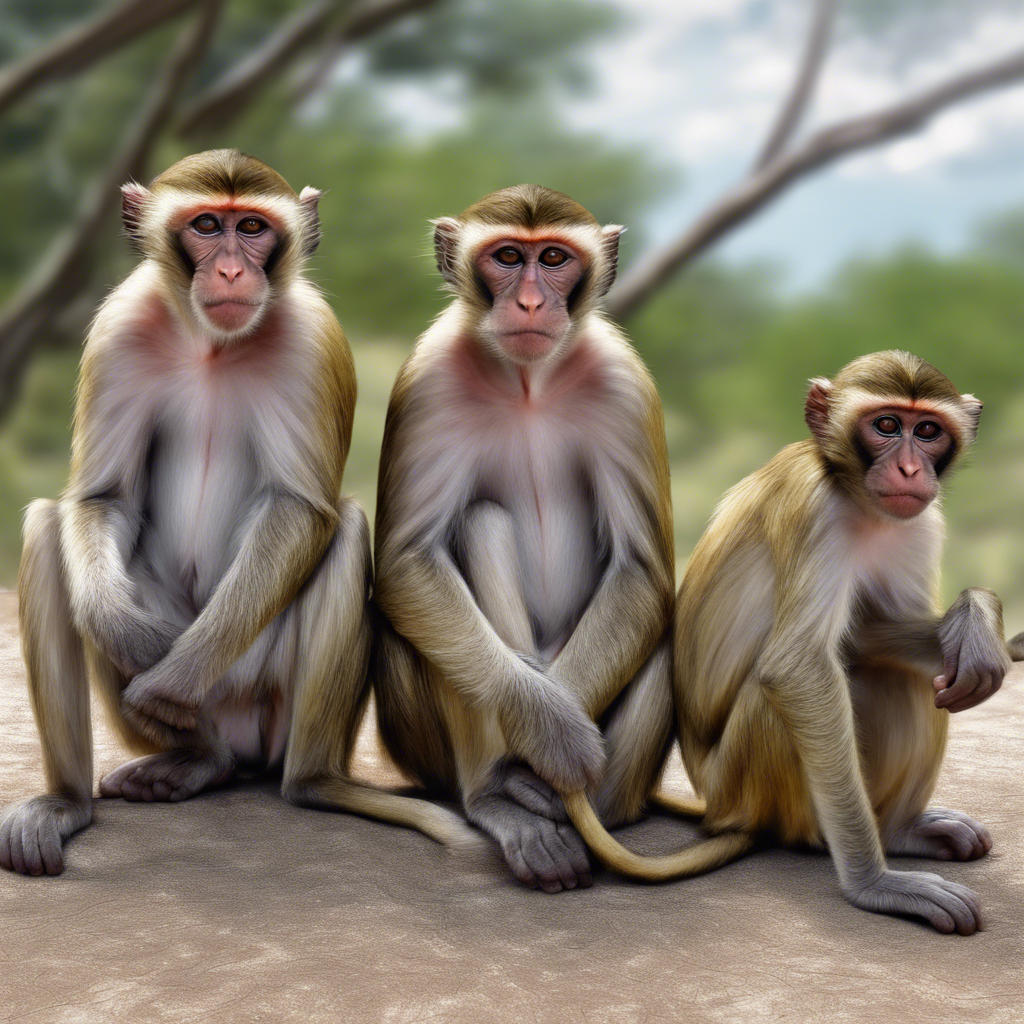
Transportation Tips Around Kilimanjaro:
When planning a trip to Kilimanjaro, understanding transportation options is crucial for a smooth experience. Here are some comprehensive tips for navigating transportation around Kilimanjaro, from arrival to getting to your climbing routes.
1. Arriving at Kilimanjaro International Airport (KIA)
Direct Flights: The most convenient way to reach Kilimanjaro is by flying directly into Kilimanjaro International Airport. Major airlines such as KLM, Turkish Airlines, and Qatar Airways offer flights from various international destinations.
Connecting Flights: If you’re flying through other African cities like Nairobi or Dar es Salaam, consider booking a local flight to KIA. However, be mindful of baggage limitations and potential extra fees on local carriers.
2. Transportation from the Airport
Pre-Arranged Transfers: Most tour operators include airport transfers in their packages. It’s advisable to confirm this with your operator before your arrival. This option ensures you have a reliable ride waiting for you12.
Taxis and Shuttles: If not arranged through a tour operator, taxis are readily available at the airport. Ensure you use registered taxis or shuttle services for safety and reliability.
3. Getting to Moshi or Arusha
Distance: Both Moshi and Arusha are approximately 30-80 minutes away from KIA, depending on traffic and your destination.
Transportation Options:
Private Transfers: A comfortable option that can be arranged through your hotel or tour operator.
Shared Shuttles: More budget-friendly than private transfers, shared shuttles run regularly between the airport and major towns.
Taxis: Readily available but negotiate the fare beforehand or ensure the meter is running.
4. Local Transportation in Moshi and Arusha
Taxis: Taxis are widely available in both towns. Use reputable taxi services or ride-hailing apps where available (like Uber in some cities).
Boda Bodas (Motorcycle Taxis): A popular and quick way to navigate through town, but ensure safety gear is provided and negotiate the fare before starting your journey.
Public Buses (Daladalas): These are an affordable way to travel but can be crowded and less comfortable. They operate between towns but may not be ideal for families or those with lots of gear.
5. Transportation to Climbing Routes
Departure Points: Most climbs start from either Moshi or Arusha, depending on the chosen route.
Tour Operator Arrangements: Many tour companies provide transportation from hotels directly to the trailheads, which simplifies logistics significantly13.
Self-Drive Options: Renting a car is possible but not recommended unless you’re familiar with local driving conditions and routes.
6. Alternative Routes and Access Points
Route Selection: Different climbing routes have varying access points:
7. Preparing for Your Climb
Pack Smartly: Ensure all gear is packed securely for transport to avoid damage during transit. Consider using duffel bags for trekking gear as they are easier to manage1.
Acclimatization Considerations: Plan your arrival a few days before your climb to acclimatize properly; this will help prevent altitude sickness during your trek4.
8. Post-Climb Transportation
After completing your climb, many tour operators will arrange transportation back to Moshi or Arusha for relaxation or further adventures like safaris or beach trips in Zanzibar.
Navigating transportation around Kilimanjaro requires some planning but can significantly enhance your overall experience. By utilizing the services of reputable tour operators, understanding local transport options, and planning ahead for both arrival and departure, you can focus on enjoying the breathtaking beauty of Kilimanjaro without logistical headaches. Whether you’re heading up the mountain or exploring nearby attractions, these transportation tips will help ensure a smooth journey!
Wildlife Awareness Around Kilimanjaro:
Wildlife awareness around Kilimanjaro is essential for understanding the unique ecosystems that thrive in this region and the challenges they face. Mount Kilimanjaro, along with its surrounding areas, is home to a rich diversity of wildlife, including many endangered species. Here’s an in-depth exploration of the wildlife in the Kilimanjaro region, the threats they face, and the importance of conservation efforts.
Diversity of Wildlife on Kilimanjaro
Mount Kilimanjaro and its national park host a wide range of animal species across various habitats:
Mammals: The park is home to over 30 species of mammals, including:
Elephants: Forest elephants are particularly notable, as they roam the lower slopes and montane forests.
Leopards: These elusive big cats are often spotted in the forested areas.
Buffaloes: Commonly seen grazing in the lower elevations.
Primates: Various species, including blue monkeys and baboons, inhabit the forest regions.
Smaller Mammals: Species like dik-diks, bushbucks, and hyraxes also thrive in this environment.
Birds: Kilimanjaro is a birdwatcher’s paradise with over 750 species recorded, some of which are endemic to the region. Notable birds include:
Kilimanjaro guereza: A type of colobus monkey known for its striking black and white fur.
Rufous-tailed weaver: An endemic bird that can be found in the montane forests.
Reptiles and Amphibians: The park also supports various reptiles and amphibians, contributing to its ecological diversity.
Threats to Wildlife
Despite its rich biodiversity, wildlife on Kilimanjaro faces several threats:
Human Activity
Habitat Destruction: Deforestation for agriculture and urban development reduces available habitats for wildlife. As human settlements expand, animals lose their natural homes.
Poaching: Illegal hunting poses a significant threat to large mammals like elephants (for their tusks) and other species targeted for bushmeat or trophies.
Pollution: Waste from human settlements can contaminate water sources, affecting aquatic life and other animals dependent on these resources.
Climate Change
Changing weather patterns affect food availability and water sources for animals. For instance, melting glaciers due to rising temperatures reduce freshwater access.
Altered precipitation patterns can lead to droughts or floods, disrupting animal migration routes and breeding cycles.
Human-Wildlife Conflict
As wildlife habitats shrink, conflicts between humans and animals become more common. Livestock predation by carnivores like lions can lead to retaliatory killings by farmers.
- Conservation Efforts
Conservation initiatives in the Kilimanjaro region aim to protect wildlife and their habitats while promoting coexistence between humans and animals:
Community Engagement: Programs like Warriors for Wildlife focus on educating local communities about the importance of wildlife conservation. They work to mitigate human-wildlife conflict through initiatives like predator-proof corrals (Living Walls) that protect livestock from predators while allowing wildlife to thrive.
Sustainable Tourism: Promoting responsible tourism helps fund conservation efforts while raising awareness about the importance of protecting wildlife. Tour operators often contribute a portion of their profits to local conservation projects.
Protected Areas: Kilimanjaro National Park is designated as a protected area under national legislation, ensuring that specific management plans are in place to safeguard its unique ecosystems.
Wildlife awareness around Kilimanjaro is crucial not only for preserving the region’s biodiversity but also for fostering a sustainable relationship between local communities and their natural environment. Understanding the challenges faced by wildlife helps promote effective conservation strategies that benefit both animals and people. By supporting local initiatives and practicing responsible tourism, visitors can play an essential role in protecting Kilimanjaro’s incredible wildlife for future generations.
Travel Tips for Climbing Mount Kilimanjaro:
Climbing Mount Kilimanjaro is a remarkable adventure that requires careful planning and preparation. Here are essential travel tips to ensure a successful and enjoyable experience while trekking Africa’s highest peak.
1. Choose the Right Time to Climb
-
Best Seasons: The ideal times to climb Kilimanjaro are during the dry seasons, which typically run from January to March and June to October. These months offer the best weather conditions, with less chance of rain and clearer views.
-
Avoid the Wet Seasons: The rainy seasons (March to May and November) can lead to slippery trails and poor visibility, making trekking more challenging.
2. Select Your Route Wisely
-
Popular Routes: There are several routes to choose from, each with its own characteristics:
-
Marangu Route: Known as the “Coca-Cola Route,” it is the easiest and only route with huts for accommodation. However, it is also crowded.
-
Machame Route: Often referred to as the “Whiskey Route,” this is more challenging but offers stunning views and a higher summit success rate.
-
Lemosho Route: Considered one of the most beautiful routes, it provides ample acclimatization time and less foot traffic.
-
Rongai Route: Approaches from the north and is less crowded, offering a unique perspective of the mountain.
-
3. Plan for Acclimatization
-
Take Your Time: Choose a longer route (7-9 days) to allow your body to acclimatize to the altitude gradually. This significantly increases your chances of reaching the summit successfully.
-
Climb High, Sleep Low: Incorporate acclimatization hikes into your itinerary, where you ascend to higher altitudes during the day and return to lower camps for sleep.
4. Physical Preparation
-
Get Fit: Start training at least a few months before your climb. Focus on cardiovascular fitness, strength training, and hiking practice on similar terrains.
-
Practice Hiking with Gear: Train with the gear you plan to use on the trek, including your backpack, boots, and clothing.
5. Pack Smartly
-
Essential Gear: Invest in high-quality gear suitable for varying temperatures. Key items include:
-
Waterproof jacket and pants
-
Warm layers (fleece or down jacket)
-
Good-quality hiking boots
-
Sleeping bag rated for cold temperatures
-
Trekking poles for stability
-
-
Hydration System: A hydration bladder or water bottles are essential to stay hydrated throughout your trek.
6. Stay Hydrated and Nourished
-
Drink Plenty of Water: Aim for at least 3-4 liters of water per day to prevent altitude sickness.
-
Eat Well: Consume high-energy foods rich in carbohydrates and protein. Many trekking companies provide meals that cater to various dietary needs.
7. Understand Altitude Sickness
-
Know the Symptoms: Be aware of symptoms like headaches, nausea, dizziness, and fatigue. If you experience severe symptoms, descend immediately.
-
Acclimatization Days: Include extra days in your itinerary specifically for acclimatization if needed.
8. Choose a Reputable Tour Operator
-
Research Companies: Look for operators with good reviews, experienced guides, and responsible practices regarding local communities and environmental conservation.
-
Inquire About Safety Protocols: Ensure they have protocols in place for altitude sickness management and emergency evacuations.
9. Prepare for Variable Weather
-
Layering is Key: Temperatures can vary dramatically from warm at the base (21ºC/70ºF) to freezing at higher altitudes (-7ºC/20ºF). Layering allows you to adjust your clothing as needed.
-
Pack Rain Gear: Even during dry seasons, sudden rain showers can occur; having waterproof gear is crucial.
10. Respect Local Customs
-
Cultural Sensitivity: Engage respectfully with local communities along your trek. Learning a few basic Swahili phrases can enhance interactions.
-
Leave No Trace: Follow eco-friendly practices by not littering and respecting wildlife habitats.
11. Enjoy the Journey
-
While reaching Uhuru Peak is the ultimate goal, take time to enjoy the breathtaking landscapes, diverse ecosystems, and cultural experiences along the way.
Conclusion
Climbing Mount Kilimanjaro is an unforgettable adventure that requires careful planning and preparation. By following these travel tips—choosing the right time and route, preparing physically, packing smartly, staying hydrated, understanding altitude sickness, selecting a reputable tour operator, respecting local customs—you can enhance your chances of successfully summiting this magnificent mountain while creating lasting memories along the way!
